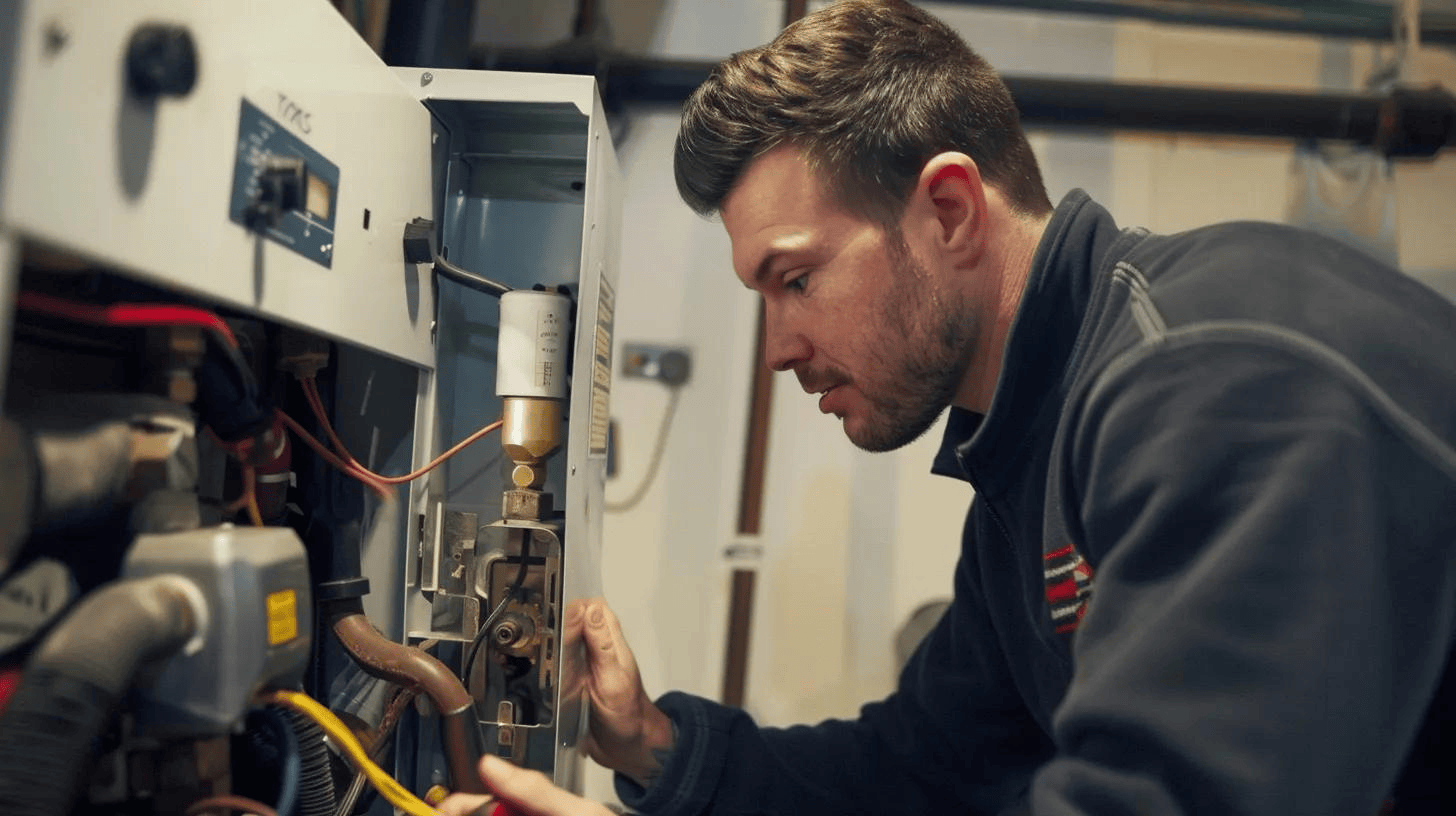Furnace Service in Aspen Hill, MD
For Aspen Hill residents, efficient furnace services are essential for winter comfort. We offer reliable furnace repair, addressing common issues like no heat, strange noises, or short cycling. Our proactive maintenance plans enhance efficiency, extend lifespan, and improve safety. When replacement is needed, we provide professional installation of high-efficiency models, ensuring optimal sizing and long-term warmth. Trust our expertise to keep your home warm and safe.

Comprehensive Furnace Services in Aspen Hill, MD
For residents of Aspen Hill, a reliable and efficient furnace is not a luxury—it is a necessity for navigating the cold Maryland winters in comfort and safety. When your heating system falters, it disrupts your daily life and can pose risks to your property. Whether you are facing a sudden breakdown, seeking to prevent future issues with routine maintenance, or considering an upgrade to a more efficient model, having a trusted local expert is essential. We provide a complete spectrum of furnace services designed to meet the unique needs of Aspen Hill homeowners, ensuring your home remains a warm and welcoming sanctuary all season long.
Our services are built on a foundation of technical expertise, meticulous workmanship, and a deep commitment to the community we serve. We handle everything from minor repairs to full-scale installations with the same level of professionalism and attention to detail.
Swift and Reliable Furnace Repair
A malfunctioning furnace requires immediate and precise attention. Our experienced technicians are equipped to diagnose and resolve a wide range of furnace problems, restoring your home’s heat quickly and effectively. We understand the common issues that affect heating systems in our area and arrive prepared to provide lasting solutions.
Common furnace problems we address include:
- No Heat or Insufficient Heating: One of the most urgent issues, a furnace that fails to produce heat can be caused by several factors, from a faulty thermostat or pilot light to more complex issues with the blower motor or heat exchanger. Our technicians perform a systematic diagnosis to pinpoint the exact cause and restore warmth.
- Unusual Noises: Strange sounds like banging, rattling, whistling, or grinding are your furnace’s way of signaling a problem. These noises can indicate issues such as loose components, a failing motor, an imbalanced blower wheel, or problems within the ductwork. Ignoring these sounds can lead to more severe damage.
- Frequent Cycling: If your furnace turns on and off in short, frequent bursts, this is known as short cycling. This condition not only fails to heat your home effectively but also places significant strain on the system’s components, leading to premature wear and increased energy consumption. Common causes include a clogged filter, improper sizing, or a malfunctioning thermostat.
- Pilot Light or Ignition Failure: Modern furnaces use electronic ignition systems, while older models may have a standing pilot light. If the ignition system fails or the pilot light will not stay lit, your furnace cannot produce heat. We service all types of ignition systems to ensure safe and reliable operation.
- Thermostat Malfunctions: Sometimes the problem lies not with the furnace itself, but with the thermostat that controls it. An inaccurate or malfunctioning thermostat can lead to poor temperature control, inefficient operation, or a complete system shutdown. We can diagnose and resolve thermostat-related issues to restore proper function.
Proactive Furnace Maintenance for Lasting Performance
The most effective way to avoid unexpected furnace breakdowns is through consistent, professional maintenance. A furnace is a complex piece of machinery that benefits greatly from an annual tune-up. Proactive maintenance is an investment in your system’s longevity, efficiency, and safety.
The benefits of regular furnace tune-ups include:
- Enhanced Energy Efficiency: A clean, well-calibrated furnace uses less energy to heat your home, which can lead to lower monthly utility bills.
- Extended Equipment Lifespan: Regular service helps prevent the excessive wear and tear that can shorten the life of your furnace, protecting your investment for years to come.
- Improved Safety: Our technicians perform critical safety checks on components like the heat exchanger, gas connections, and electrical wiring to identify potential hazards like carbon monoxide leaks.
- Fewer Unexpected Breakdowns: By identifying and addressing minor issues before they escalate, routine maintenance significantly reduces the likelihood of a costly and inconvenient system failure during the coldest months.
Our comprehensive maintenance service includes a detailed inspection, cleaning of critical components, lubrication of moving parts, and calibration of the system for optimal performance.
Professional Furnace Installation and Replacement
While regular maintenance can extend the life of your furnace, there comes a time when replacement is the most practical and cost-effective option. Investing in a new, high-efficiency furnace can improve your home’s comfort, enhance its value, and provide significant energy savings over the long term.
Consider replacing your furnace if you notice:
- Advanced Age: Most furnaces have a lifespan of 15-20 years. If your unit is approaching or has exceeded this age, it is likely operating inefficiently and is more prone to failure.
- Rising Repair Costs: If you find yourself frequently calling for repairs, the cumulative cost can quickly approach the price of a new unit.
- Increasing Energy Bills: A noticeable and unexplained spike in your heating costs is often a sign that your furnace has lost its efficiency and is struggling to heat your home.
- Inconsistent Heating: Poor performance, including cold spots throughout your home or the inability to maintain a consistent temperature, indicates that your current system is no longer adequate.
Our furnace installation process is thorough and customer-focused. We begin with a detailed consultation and perform a load calculation to ensure your new system is perfectly sized for your home’s specific needs. We then guide you through selecting the right model and complete the installation with precision and care, ensuring your new system delivers reliable and efficient warmth for years to come.
Your Furnace Questions, Answered
What are the most common reasons a furnace stops working?Often, furnace failures are caused by issues that are simple to address, such as a dirty or clogged air filter that restricts airflow, a malfunctioning thermostat, or a tripped circuit breaker. More complex causes can include a faulty ignitor, a failing blower motor, or an issue with the gas supply.
How often should I have my furnace professionally maintained?We strongly recommend professional furnace maintenance once a year. The ideal time for this service is in the early fall, before you begin relying on your heating system for the winter. This preventative measure ensures your furnace is clean, safe, and operating at peak efficiency.
How do I know if I should repair my furnace or replace it?A key guideline is to consider the age of the unit and the cost of the repair. If your furnace is over 15 years old and requires a major, expensive repair, replacement is often the more financially sound decision. Frequent breakdowns and a significant decline in efficiency are also strong indicators that it is time for a new system.
Can a new furnace lower my heating bills?Yes, a new high-efficiency furnace can significantly reduce your monthly heating costs. Modern furnaces are designed with advanced technology that allows them to produce more heat with less fuel compared to older models, leading to substantial energy savings over the life of the unit.
What is furnace short cycling and why is it a problem?Short cycling describes a condition where a furnace turns on and off in rapid succession without completing a full heating cycle. This is often caused by an oversized system, a severely clogged air filter, or a faulty thermostat. It is a serious problem because it puts immense stress on furnace components, leading to premature failure, and is highly energy-inefficient.






.png)
